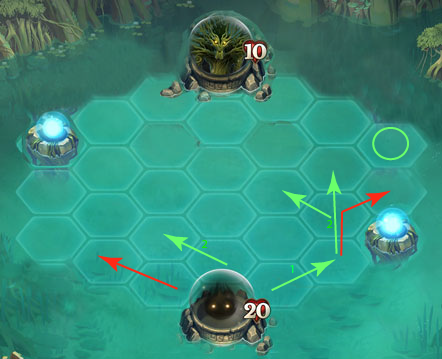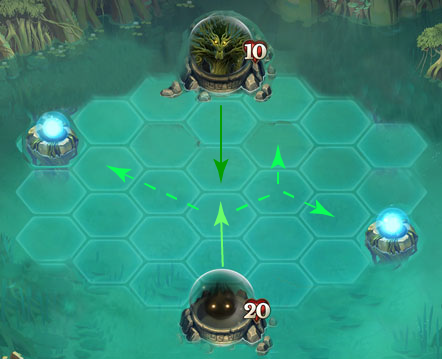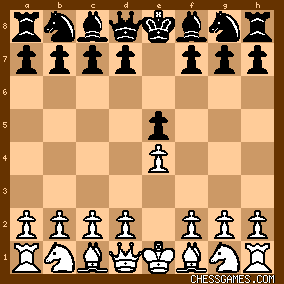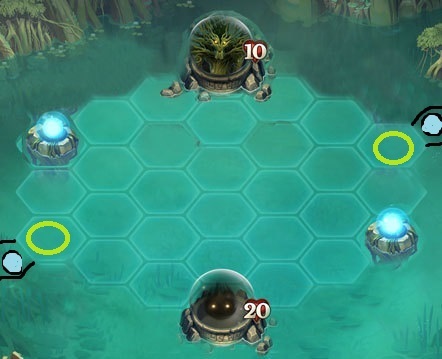Dear Faeria,
About a year ago you wrote me a nice letter, in which you apologised for failing me. A few weeks ago you failed me again, this time sans fancy letter. I thought this time I’d write you one instead.
Don’t worry, I’m not going to harp on the decision to do a one-eighty on your business plan (again!). I understand there are business realities that are not apparent from the outside, and you do what you have to do. What does bother me about it is that it’s difficult to believe that you really couldn’t see this coming, especially considering that some of us (including myself) warned you of exactly the same issues you now point towards as justification for the change. It does make me wonder what this was all about.
Anyway, I’m heavily invested in the game and I want to see it succeed. The remainder of this letter will focus on what I see as some remaining flaws in the current game design, which I believe most people will not tell you about because it’s not cool to do so. I will be “that guy” and I’ll be wearing my asbestos suit, so don’t worry about my health.
Pacing Issues
Let me preface this by going back to your original kickstarter design. Back then the game had many unique ideas (of which unfortunately very few stood the test of time), but it had terrible pacing issues. For a card game which is highly RNG based by nature of the draw, the game was just way too slow.
At the time I started saying that the game either needs to be more tactics and less RNG, or the game simply has to be a lot faster. I was hoping you’d go for the former, but when it became clear that you wouldn’t, I suggested / encouraged some of the changes part of the community now hates you for (you are welcome), including the strikeback change and simplified economy.
When you presented the redesigned result I was thoroughly impressed. The current version of the game is like night and day compared to the original, and that’s not just because you cut out the daylight cycle! I think it’s fair to say that the current version is a massive improvement, and I’ve sunk a ton of time into it. But is it perfect? Is it the absolute best rendition of the concept that will ensure permanent growth and the ability to go head to head with your largest competitors? No, I don’t think so.
This became more clear to me when I tried to be more measured about the amount of time I invest into the game. It just didn’t feel right, and I’ve spent a lot of time thinking about why this is and how I believe the issues could be fixed.
The main issue is, that the core game design is still too slow for what it does. I know this is an unpopular notion, not a lot of current players will agree with this, so let me elaborate…
First of all, to anybody tempted to accuse me of lacking patience, I would ask this: Have you ever spent six continuous hours on a tournament chess game before? Because I have, and I’ve enjoyed every minute of it. This is not about preference or what I personally like, this is about what’s right for this particular game.
It’s important to note that just requiring more brains and strategy than Hearthstone does not make Faeria a different type of game. It is still a (digital) card game with all the core aspects of CCGs which favour a short match duration. These include:
-
The RNG. There may be less than Hearthstone (though Unbound would like to have a word about that), but it is still a card game. Win or lose depends very heavily on the luck of the draw, which is why we talk about winrates and increasing your odds. Skill only really shows over a number of matches, and shorter games make it much easier to play a large number of them.
-
The Rock, Paper, Scissors Design. I’ve argued quite vehemently against this in the past, but it’s clear that it is not going to go away. Certain decks countering other decks has always been a staple of card game design, but that makes it all the more annoying if the few games you are able to play on an evening (or in a tournament!) are ruined by running into your deck’s counters.
-
Deck Building. Obviously that’s a huge part of the game, but to test a new deck you have to play a seizable number of games do get a decent idea of how it works. Another aspect of this is that it’s very easy to ruin your rating by playing a lot of experimental decks which lose early and hard. It is much more difficult to get your rating back up once you’ve found a deck that works and the longer a game lasts, the bigger this rift between experimental losses and serious wins. Basically the longer an average game lasts, the more you are punishing experimentation.
-
The Nature of the Game. While the game has some strategic elements, ultimately it’s a card game and won like any other card game: By making smarter decisions based on probabilities and playing around what your opponent likely has in their hand. But the only way to get this kind of experience is to play a lot of games. This is exacerbated by a constantly shifting meta and balance updates, meaning that even seasoned players can struggle getting ahead if they can only play infrequently.
-
No Easy Way Out. In deterministic strategy games, you generally resign when you fall too far behind. With the unpredictable nature of card games you are generally encouraged to play through to the bitter end, since it’s all about squeezing out those last few percentages of the winrate. This means you will constantly suffer through games which are practically lost, and this is much easier to swallow when the games are over fast.
So while faster games help with all the above issues, they also provide a few more benefits:
-
Better Matchmaking. Shorter games = more players looking for games at a time = faster and more accurate matchmaking.
-
Improved Accessibility. Some people can’t schedule large blocks of uninterrupted time. The shorter games are, the more players can enjoy the game.
-
More Mobile Friendly. Mobile games are played on the bus, on the loo, or while waiting for the water to boil. You know that Faeria has the potential to be a massive hit on mobile, but it won’t be at current game lengths. It could be. It should be.
Pandora’s Box
I know you are aware of the game’s current pacing issues and that you have taken steps to rectify it. In constructed you have done so by pushing deck types which fix or improve those issues. For Pandora this was not an option so you took more drastic measures.
In the end, these feel like band aids to the fundamental flaw. In constructed it is going to rear its ugly head again every now and then, and the Pandora solution feels a little bit ham-fisted. While it succeeds at ending the game within reasonable time, it does so at the cost of butchering the natural flow of the game. The usual flow goes something like this: Boring opening phase, interesting middle game, eventual climax / lethal. What Pandora does is essentially to cut out the middle bit, so you go straight from boring to climax. I would also argue that it makes the opening bits even less interesting because it’s almost impossible to gain any kind of advantage that will survive the box opening. It’s no wonder then that players largely favour rush and burn decks, since direct damage is just about the only way to gain a guaranteed advantage.
This is good for the pace of Pandora, but with all these excessive measures being required, you got to wonder whether there isn’t a more elegant approach to fixing the underlying issue.
Skill Ratio
I’m sure some people will object that faster games require less skill, but that is just not true. Let’s say one game requires 20 meaningful decisions and lasts 10 minutes. Another game only requires 10 meaningful decisions but lasts 5 minutes. Which of the games is more skill based? In terms of “skill per minute”, it’s exactly the same. Of course things are not so straight forward in reality and there are many factors to consider, but it illustrates the point. I’m not talking about dumbing things down, but about streamlining the game to the point of condensing all the meaningful decisions into a smaller time frame and to cut out any non-essential bits.
So with that said, let’s move on to the actual meat of this post. I am convinced that there is something we are just not seeing yet, a blindspot of sorts, that unleashes the game’s full potential. I can feel it in my gut that it’s really really close and it might just need a little bit of nudging to get there, but it definitely still needs something. I am going to propose a few things, maybe they will work maybe they won’t, but in any case I hope that it will get brainwaves moving.
Time Control
When talking about speeding up the game, it seems natural to talk about the timer first. I understand this aspect isn’t easy to improve. Any time controls which limit your round time to a minimum are likely to be insufficient during big turns. Anything involving a time bank becomes a lot more complicated.
But Faeria is not Hearthstone. There is a lot to do during some turns and players are more likely to actually make use of their timer. If each player spends two minutes on only a single turn, you are already at the 4 minutes mark which is when many casual games are already over. This is insane. I do believe that something needs to be done about this, it may just not be possible to have your cake and eat it too.
One approach could be an adaptive timer which gradually increases as the game goes on or based on the number of units on the board. This could be quite confusing of course, but if well designed it will simply feel to the user like they got “enough time to finish their turns”.
Personally I would prefer a well crafted and intuitive time bank system. An absolute time limit as in your tournament mode (if that hasn’t been changed by now) is far from ideal, since it opens up the possibility of getting into Zeitnot. In a game where the length of a match is completely unpredictable and you constantly lose time from the little lags and animations, that is just not appropriate in my opinion.
My suggestion would be a modified Bronstein system, adapted to Faeria like so:
Players get a buffer of 10 seconds or so to do an action (move a creature, draw a card, etc). Whenever they complete an action, the buffer is reset. If the buffer runs out, time starts ticking from the time bank (which can be something small, e.g. two minutes). If the player has no time left on the bank when the buffer runs out, the turn is skipped and they now have to do each action within the duration of the buffer to avoid their turns being skipped.
Visually this could be presented pretty nicely by using the current hourglass animation to subtly indicate the buffer. When the buffer is out, the remaining time bank should be highlighted and the hourglass circle could pulse in a scary colour to indicate that time bank is being used up. Ticking sounds would only ever be necessary during the last few seconds with no banked time remaining.
While more complicated than the current system, I believe that this ticks all the right boxes: Fairly easy to understand, very forgiving (more forgiving than the current system in some ways since you can’t get yourself into that situation where you don’t have enough time to execute your moves); while also ensuring that the game keeps moving along at a steady pace and fast thinking and concentration is rewarded.
Board Layouts
The board is probably the most obvious thing to turn to. It was already shrunk before, arguably with great success. But is it really the ideal setup? In many ways, the board is saying “don’t bother attacking, just go sit back and farm your wells”. It also necessitates a fair number of moves just for any tension to happen. Considering how much trouble you are going through to fix the issues arising from just that behaviour, it stands to reason that the board is the root issue.
Obviously we wouldn’t want to shrink it too much, in the end it is the one truly unique aspect of the game and it’s vital to maintain the feeling of strategic positional choices. So with that in mind, here are two possible tweaks for consideration:
Version One:
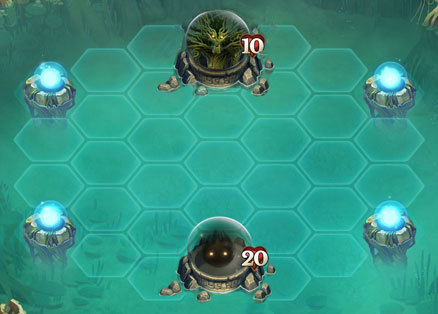
This version simply moves the orbs one tile towards the centre, removing only the tiles right above and below the orbs. It’s a seemingly small change yet it makes the board feel a whole lot more intimate. It’s like the orbs are in the middle of the fighting rather than distant from it, and perhaps that is a good thing. Incidentally this would also allow you to zoom in closer to the board as it gets rid of a lot of white space, and I’m sure you already realised how important this will be on mobile devices.
Balance wise this is almost guaranteed to have drastic consequences of course, which aren’t all easy to predict. The centre would gain a massive amount of importance as it allows for efficient attack and defence. Yet going around is still viable as you gain a lot of extra Faeria and just like a fianchetto opening in chess, you can aim to control the centre from the sides.
The most dubious part about this may be that Player One can immediately claim the centre tile, although this would give Player Two a chance to be the first to deploy and contest it so I’m not sure how that would work out.
Version Two:
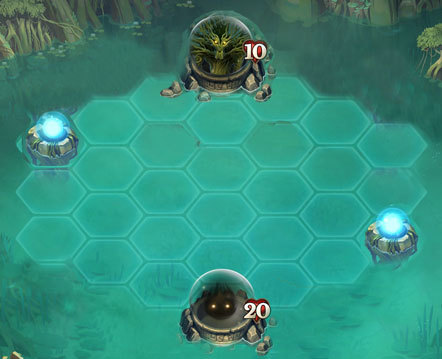
This version gets rid of the entire middle row, yet it feels less dramatic than the previous one. Personally I really like this one. The lack of a centre row makes openings a bit more balanced and adds early tension, increasing the value of the centre but not as extremely as the previous version.
The most interesting element in my opinion are the asymmetric wells (which could give 2 Faeria a pop to compensate if necessary). This would have a number of effects:
-
It creates a natural defensive lane on the left and offensive lane on the right. Aggressive decks are more likely to go for the centre right away to pressure the opponent’s well.
-
Assuming the attack happens over the right side, defence has a lot less Faeria advantage which should encourage both sides to press the attack. This is exactly what the board should be doing in my opinion.
-
“Left or right” stops being arbitrary and becomes a very meaningful decision in the opening stage of the game.
-
It actually opens up a part of the board and makes it feel more spacious (despite being smaller), allowing more room to flank an orb from the side.
I do think this strikes a really nice balance and I would love to give this one a try.
Brawling
A great way to give these alternate layouts a proper beating would be a kind of weekly brawl format. I’m sure you have thought of this, and I believe this would make a great addition to the game. You already have custom boards and rules for your epic quests, so extending those to brawls seems quite natural.
Ranged
Wait, I’m not quite done yet! While not related to everything else, this is kind of important as well. The ranged mechanic as it is feels like a failed design. Whenever you have a keyword that requires roughly two paragraphs to describe all the details and yet it barely features in general gameplay, you know that something is wrong. To make matters worse, when it does feature it generally happens in a very polarising way, where ranged either leads to an easy win or is completely useless. I think it’s time to go back to the drawing board with this.
My suggestion would simply be this:
Ranged: Can only attack targets two tiles away. Only retaliates against ranged attacks.
Two simple sentences and it says everything. No “in a straight line”, no “can’t move”, or any other complication.
This sounds ridiculously overpowered, doesn’t it? After all this makes ranged units able to kite their attackers and become practically untouchable. Putting ranged units behind your frontline suddenly becomes an extremely strong tactic. And just imagine putting them behind a taunt creature.
Yes it would be powerful, but at the same time ranged units would be a huge liability, vulnerable to movement tricks, haste, or simply being cornered (especially if you consider this in combination with a tighter board as described above). The best thing about it is that the power level would remain relatively constant throughout the game and ranged would likely feature very heavily in most deck builds. It would add a lot of tactical and positional considerations.
It would also open up additional design space, for instance:
Strikeback: Retaliates against all kinds of attacks (see what I did there)
Shielded: Immune to ranged attacks.
##Closing Thoughts
That’s it, the wall of text has been built. Heck, my text editor classifies this as a “short story”. I really appreciate if you took the time to read it, I understand it is a lot to ask. Then again it’s the least you can do after still not getting me my golden badge or custom lands kickstarter rewards. ![]()
In all seriousness, my feedback may be harsh at times, but I don’t mean to discourage. All in all you are doing a fantastic job, which is why it is so exasperating when things just don’t really click yet. I feel like Faeria is really close to greatness, and yes it is fun as it is, but I find it hard to fit it anywhere into my life as it is and I have a strong feeling that a userbase explosion is not going to happen until it truly finds its place, wherever that may be.
Please give it one more push. I’ve never spent as much time and energy on a game I haven’t worked on myself than I have on Faeria, and at the risk of repeating myself, I really want to see it succeed on a broader scale. This post will probably not elicit particularly positive responses from the community, which currently largely consists of hardcore Hearthstone or MtG players who don’t mind the time requirements. I do hope that at least some will be able to see that speeding up the game would open it up to a much wider audience without necessarily taking anything away from the game (to the contrary in my humble opinion).
Yours truly,
Zenity / DanielB

 This way you’d have a Ranged unit on one side, a blocker in front, an opponent blocker in front, and the shielder behind :D. Anyway, it’s true that you probably can’t change Ranged mechanic to this new one (which I find pretty interesting) without changing a few things as well.
This way you’d have a Ranged unit on one side, a blocker in front, an opponent blocker in front, and the shielder behind :D. Anyway, it’s true that you probably can’t change Ranged mechanic to this new one (which I find pretty interesting) without changing a few things as well.